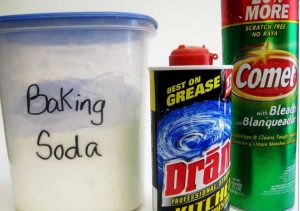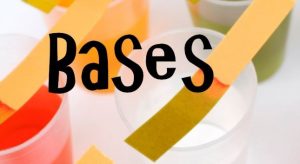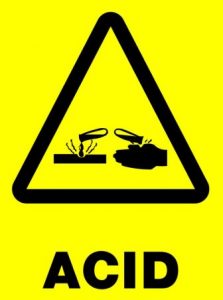Acids, Bases and Salts
Acids, Bases and Salts
ACIDS are any of a class of compounds that form hydrogen ions when dissolved in water, and whose aqueous solutions react with bases and certain metals to form salts. Acids turn blue litmus paper red and have a pH of less than 7. Their aqueous solutions have a sour taste.

BASES are any substance that in water solution is slippery to the touch, tastes bitter, changes the colour of indicators, reacts with acids to form salts, and promotes certain chemical reactions.

SALT is an ionic compound which is made up of two groups of oppositely charged ions. The ion with a positive charge is called a cation, and the one with a negative charge is called an anion.
Chemical Properties of Acids :
Acids change the colour of litmus from blue to red.
They convert the colour of Methyl Orange from Orange/Yellow to Pink.
Acids are sour in taste.
Acids can conduct electricity.
Some Acids are highly corrosive in nature which means that they corrode or rust metals.
When equal amounts of acid and base are combined the process of neutralization occurs and salt and water is formed.
Extremely active metals such as Potassium (K), Calcium (Ca), Sodium (Na), etc tend to explode when combined with acids.
Acids form a salt, water and sulphur dioxide while reacting with sulphites and bisulphites.
Acids react with carbonates and hydrogen carbonates to form a salt, water and carbon dioxide gas.
They are classified on the basis of their sources, strength, concentration, the presence of oxygen and its basicity.
The different types of acids are organic acids, mineral acids, strong acids, weak acids, concentrated acids, dilute acids, Oxy-acids, Hydracids, monobasic acids, dibasic acids, and tribasic acids.
For example:
Acid reacting with a Metal: Mg (s)+ 2HCl (aq) → MgCl2 (aq) + H2 (g)
Acid Reacting With Bases: CuO (s) + 2HNO3 (aq) → Cu(NO3)2 (aq) + H2O (l)
Acid Reacting With Carbonates: CaCO3 (s) + 2HCl (aq) → CaCl2 (aq) + H2O (l) + CO2 (g)
Chemical Properties of Bases :

Bases change the colour of litmus from red to blue.
They are bitter in taste.
They can conduct electricity.
Bases feel slippery or soapy.
Alkalis and ammonium salts produce ammonia.
The pH value of bases ranges from 8-14.
When equal amounts of acid and base are combined the process of neutralization occurs and salt and water is formed.
Alkalis are bases that produce hydroxyl ions (OH-) when mixed with water.
Bases are classified on the basis of strength, concentration and acidity.
Strong alkalis are highly corrosive in nature whereas other alkalis are mildly corrosive.
The different kinds of acids are strong base acid, weak base acid, concentrated base, dilute base, monoacidic base, diacidic base and triacidic base.
For example:
Reaction with Metals – Certain reactive metals such as Zinc, Aluminium, Tin react with alkali solutions on heating and hydrogen gas is evolved – 2NaOH + Zn → Na + 2 ZnO2 +H2
Reaction with acids -Bases react with acids to form salt and water – KOH + HCl → KCl + H2O
Reaction of Base with Non-metal oxide – CO2 + Ca(OH)2 → CaCO3 + H2O
Chemical Properties of Salts :

Salts are ionic compounds therefore they show ionic reactions which occur quickly and usually exothermic in nature. Salt do not undergo combustion but electrolysis of salts releases metal and non-metals such as electrolysis of molten NaCl forms chlorine gas and metallic sodium.
2NaCl (s) + H2SO4 (I) Na2SO4(s) + 2HCl(g)
Similarly aqueous solution of sodium chloride reacts with aqueous silver nitrate and form silver chloride.

